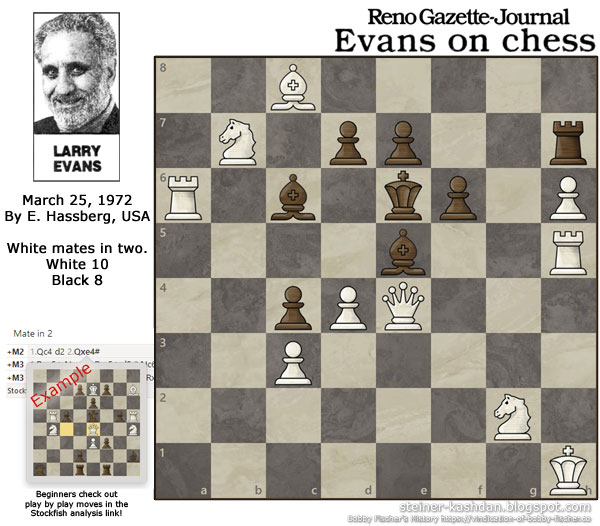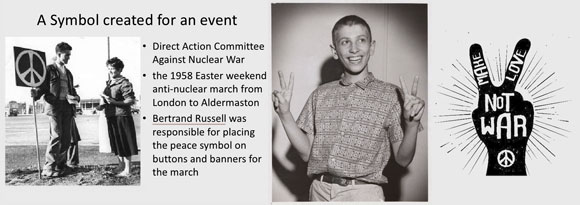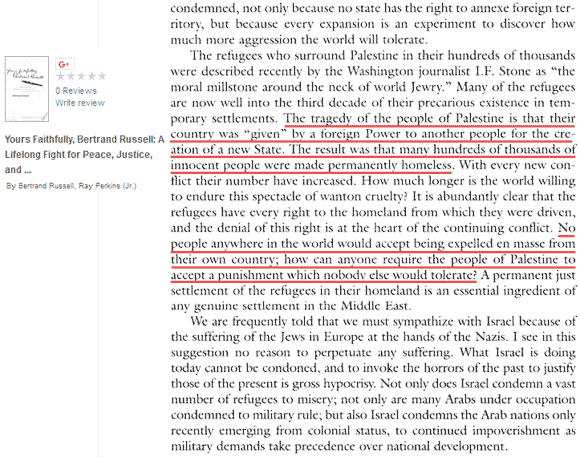Reno Gazette-Journal Reno, Nevada Saturday, March 25, 1972 - Page 5
EVANS ON CHESS
E. Hassberg, USA
Problem: (03/25/1972) White mates in two.
Stockfish Analysis.

Chess Clocks for Bridge
From the looks of things, chess clocks may become a fixture of tournament bridge. They were introduced in a playoff for the U. S. Olympic Bridge team. One side was promptly fined 3 international match points for exceeding the allotted 2½ hours per 18 hands.
A chess clock is essentially 2 stopwatches mounted on a single base. After a player moves he punches his clock. This automatically stops his clock and starts his opponent's. There is also a way to stop both clocks so that time isn't charged against either side.
Chess clocks have been in use since the turn of the century, and modern tournaments would be inconceivable without them. Already at the great London tournament in 1851 Staunton complained that championship matches were dragging endlessly and threatening public interest in professional competition: “When a player, upon system, consumes hours over moves when minutes might suffice and depends, not upon outmaneuvering, but out-sitting his antagonist, patience ceases to be a virtue…”
The usual international time limit for each side is 40 moves in 2½ hours. A player may deliberate as long as he wants on any given move, but he forfeits the game if he does not complete his 40th move before his flag falls. This gives rise to incredible situations known as time-pressure where both sides sometimes have split seconds.
A game is adjourned and resumed next day if it still is not completed after the first 5-hour session. Unfortunately this delay is fraught with abuses since it enables both players to seek advice and consult with others.
Experiments to speed up the game adversely affect the quality of play but make it possible to accommodate thousands of players in weekend tournaments with many rounds a day. 30/30 for example means each side has only 30 minutes for 30 moves, so that a game can be completed in a single sitting. A popular and exciting form of skittles is 5 and or 10 minute chess where each side is allotted as many minutes to complete an entire game — win, lose or draw. This is a lot of fun and the stronger player often gives a time handicap. A reliable chess clock can be purchased for under $20. With bridge players entering the game, manufacturers had better brace for a run on the market.
PROBLEM SOLUTION: 1 Q-N6!









